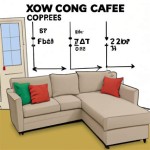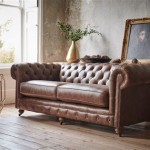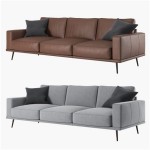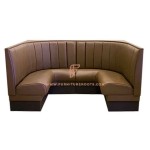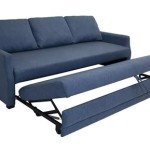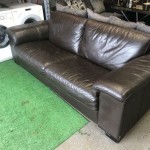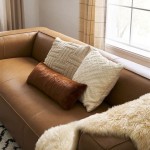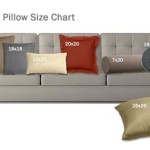Fabrics For Sofas: A Comprehensive Guide to Choosing the Right Material
Selecting sofa fabric is a crucial decision that directly impacts the furniture's aesthetics, durability, comfort, and maintenance requirements. The fabric chosen dictates not only the sofa's visual appeal but also its ability to withstand daily use, resist stains, and provide a comfortable seating experience. A thorough understanding of the various fabric options available, their respective characteristics, and performance attributes is essential for making an informed choice that aligns with individual needs and lifestyle.
The sofa, often the focal point of a living room, endures significant wear and tear. Therefore, the fabric must be robust enough to withstand frequent use, resist abrasion, and maintain its appearance over time. Furthermore, the fabric's ability to resist stains, fading, and pilling is paramount, particularly in households with children or pets. Comfort is another critical consideration, with factors such as texture, breathability, and temperature regulation playing significant roles in the overall seating experience. The aesthetic appeal of the fabric should also complement the room's décor and reflect the homeowner's personal style. Finally, the ease of cleaning and maintenance is a practical concern, as regular upkeep is necessary to preserve the sofa's appearance and longevity.
Numerous factors influence the selection of sofa fabric; these include the intended use of the sofa, the presence of children or pets, the room's décor, and the homeowner's personal preferences. High-traffic areas often necessitate more durable and stain-resistant fabrics, while formal living rooms may benefit from more luxurious and delicate materials. Households with children and pets require fabrics that can withstand spills, scratches, and shedding. The room's existing color palette and style should also be considered to ensure that the sofa fabric complements the overall design scheme. Ultimately, the ideal sofa fabric is one that balances aesthetics, durability, comfort, and practicality.
Understanding Fabric Composition and Weave
The composition of a fabric refers to the types of fibers used in its construction. These fibers can be natural, synthetic, or a blend of both. Natural fibers, such as cotton, linen, wool, and silk, are derived from plants or animals and offer various advantages, including breathability, softness, and natural beauty. Synthetic fibers, such as polyester, nylon, acrylic, and olefin, are man-made and generally offer enhanced durability, stain resistance, and affordability. Blended fabrics combine the benefits of both natural and synthetic fibers, often resulting in a material that is both comfortable and durable.
The weave of a fabric refers to the way in which the fibers are interlaced to create the material. Different weaves result in different textures, patterns, and performance characteristics. Common weave types include plain weave, twill weave, satin weave, and knit weave. Plain weave is a simple and durable weave, often used for cotton and linen fabrics. Twill weave is characterized by diagonal ribs and is known for its strength and resistance to wrinkles. Satin weave is a smooth and lustrous weave, often used for more formal and delicate fabrics. Knit weave is a stretchy and comfortable weave, often used for casual and relaxed seating.
The relationship between fabric composition and weave significantly impacts the overall performance of the sofa fabric. For example, a tightly woven polyester fabric will be more durable and stain-resistant than a loosely woven cotton fabric. Similarly, a satin weave is more prone to snagging and tearing than a twill weave. Therefore, it is essential to consider both the composition and the weave when selecting a sofa fabric to ensure that it meets the specific needs and demands of the environment.
Key Fabric Options: Properties and Suitability
Cotton is a natural fiber known for its softness, breathability, and affordability. It is a popular choice for sofas due to its comfort and versatility. However, cotton is susceptible to staining, fading, and wrinkling, and may not be the best option for high-traffic areas or households with children and pets. Pre-treated cotton fabrics, such as stain-resistant cotton blends, offer improved durability and stain resistance, making them a more practical choice for everyday use.
Linen is another natural fiber known for its durability, breathability, and elegant appearance. It is a popular choice for formal living rooms and spaces where a sophisticated look is desired. However, linen is prone to wrinkling and staining, and requires more careful maintenance than other fabrics. Linen blends, which combine linen with other fibers such as cotton or polyester, offer improved wrinkle resistance and durability.
Wool is a natural fiber known for its warmth, durability, and resistance to stains and fire. It is a luxurious and comfortable option for sofas, but it can be more expensive than other fabrics. Wool requires professional cleaning and is susceptible to moth damage. Wool blends, which combine wool with other fibers such as nylon or acrylic, offer improved durability and affordability.
Polyester is a synthetic fiber known for its durability, stain resistance, and affordability. It is a popular choice for high-traffic areas and households with children and pets. Polyester is resistant to fading and wrinkling, and is relatively easy to clean. However, polyester is less breathable than natural fibers and can feel less comfortable in warm weather. Microfiber, a type of polyester, offers a soft and suede-like texture, making it a comfortable and durable option for sofas.
Nylon is a synthetic fiber known for its strength, durability, and resistance to abrasion. It is often used in blends with other fibers to enhance their durability and stain resistance. Nylon is relatively easy to clean and is resistant to fading and wrinkling. However, nylon is less breathable than natural fibers and can feel less comfortable in warm weather.
Acrylic is a synthetic fiber known for its resemblance to wool. It is a soft and warm option for sofas but is less durable than other synthetic fibers. Acrylic is resistant to fading and wrinkling, and is relatively easy to clean. However, acrylic is prone to pilling and can be susceptible to staining.
Olefin (Polypropylene) is a synthetic fiber known for its durability, stain resistance, and resistance to fading and mildew. It is a popular choice for outdoor furniture and is often used in high-traffic areas. Olefin is relatively inexpensive and easy to clean. However, olefin is less resistant to heat and abrasion than other synthetic fibers.
Leather is a natural material known for its durability, luxurious appearance, and unique texture. It is a popular choice for sofas but can be more expensive than other fabrics. Leather is relatively easy to clean and maintain, but it requires periodic conditioning to prevent cracking and drying. Different types of leather, such as full-grain, top-grain, and bonded leather, offer varying levels of quality and durability.
Evaluating Performance and Maintenance
Durability is a key performance indicator for sofa fabrics. The durability of a fabric refers to its ability to withstand wear and tear, resist abrasion, and maintain its appearance over time. Durability is often measured using the Martindale test, which simulates the abrasion of fabrics during regular use. Fabrics with higher Martindale ratings are more durable and suitable for high-traffic areas.
Stain Resistance is another crucial performance indicator, particularly in households with children or pets. Stain-resistant fabrics are treated with special finishes that repel liquids and prevent stains from penetrating the fibers. These finishes can significantly improve the fabric's ability to resist spills, dirt, and other common stains. However, it is important to note that no fabric is completely stain-proof, and prompt cleaning is still necessary to prevent permanent stains.
Fade Resistance refers to a fabric’s ability to withstand exposure to sunlight without fading or discoloration. This is particularly important for sofas that are placed near windows or in rooms with high levels of natural light. Fabrics with good fade resistance are typically made from synthetic fibers or have been treated with UV-resistant finishes.
Pilling Resistance is the ability of a fabric to resist the formation of small balls of fibers on its surface. Pilling is a common problem with some fabrics, particularly those made from short-staple fibers. Fabrics with tighter weaves and longer fibers are generally more resistant to pilling.
Cleaning and Maintenance requirements vary depending on the type of fabric. Some fabrics can be easily cleaned with soap and water, while others require professional cleaning. Regular vacuuming is essential to remove dirt and dust, and prompt cleaning of spills is crucial to prevent stains. It is important to follow the manufacturer's instructions for cleaning and maintenance to ensure the longevity of the sofa fabric.
Ultimately, selecting the right sofa fabric requires careful consideration of various factors, including fabric composition, weave, performance characteristics, and maintenance requirements. By understanding the properties and suitability of different fabric options, homeowners can make an informed choice that aligns with their individual needs and lifestyle, ensuring a comfortable, durable, and aesthetically pleasing sofa that will last for years to come.

Best Fabrics For Sofas The Inside

17 Types Of Sofa Materials In Malaysia Best Fabrics For Your Couch Cuura Space

The Ultimate Guide To Upholstery Fabric For Sofas Linwood

What Is The Best Fabric For A Sofa Living Designs Furniture

What Are The Top 10 Fabrics For Sofas Picket Rail Custom Furniture Interiors

Best Sofa Materials Leather Vs Fabric Sofas

Best Fabrics For Sofas The Inside

Sofa Fabric Types Crate Barrel

Best Fabrics For Sofas The Inside

5 Types Of Sofa Fabrics That Are Suitable For N Homes

